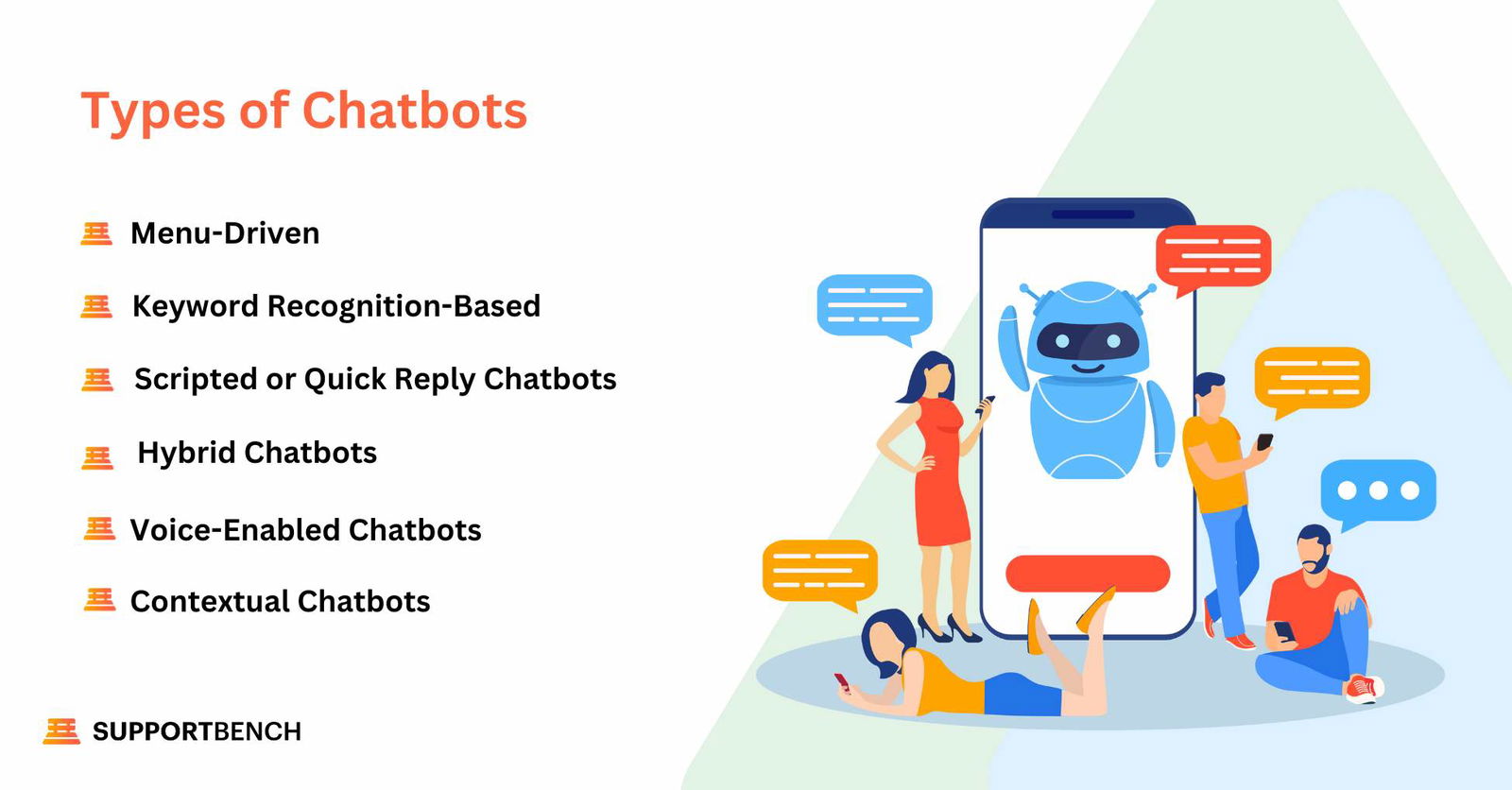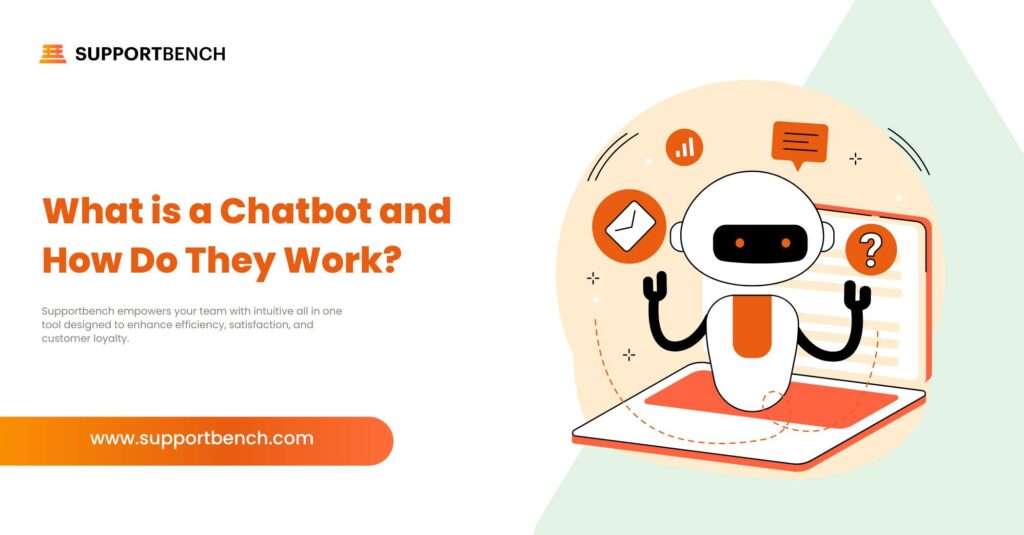With the rapid development of customer service technologies, efficiency and personalization are becoming two new cornerstones of business success. A key innovation driving this trend is the rise of virtual assistants, commonly known as chatbots. Chatbots are changing the way companies support their customers by handling both common inquiries and more complex issues.
With platforms like Supportbench, chatbots power every customer’s experience even further. At Supportbench, AI-driven insights and automation enable teams to enhance customer interactions, allowing human agents to focus on higher-value tasks. Let’s discuss what a chatbot is, how it works, and why it is now indispensable in modern customer service operations.
What Is a Chatbot?
A chatbot is a computer program that converses with human users either in text or voice-based format. Chatbots are used by businesses as a reliable way of dealing with simple queries and tasks for customers and businesses.
They save costs by freeing human support personnel and allow companies to offer customer support services round the clock.
They can be basic, using scripts for quick answers, or advanced, using artificial intelligence (AI) and machine learning (ML) to hold conversations and perform complex tasks. Chatbots can communicate in writing or through speech.
Types of Chatbots
Since Chatbots are a relatively new technology, there’s some debate about the different types and what to name them. Following are some common types:

Menu-Driven
In these types, the model provides the customer with a list or menu to choose from in order to make the bot understand what they exactly need.
Keyword Recognition-Based
These are more advanced. They actually ‘hear’ what the users are typing and respond with keywords. They combine keywords with AI but often can’t handle repeated keywords or similar questions.
Scripted or Quick Reply Chatbots
These are the simplest chatbots. They work along a decision tree, asking pre-set questions until they can finally answer the user’s question.
Hybrid Chatbots
These integrate menu-based features with keyword recognition. Users can directly ask questions or use a menu if the keyword recognition doesn’t work well.
Voice-Enabled Chatbots
Voice-enabled chatbots respond to voice provided by the user. These bots are built based on voice recognition or text-to-speech technology created by several developers. Examples are Amazon Alexa and Siri from Apple.
Contextual Chatbots
This is the most advanced. They make use of AI and machine learning to remember past conversations, thus improving over time. They focus on how users ask questions rather than just keywords.

How Do Chatbots Work?
Chatbots make use of set conversation paths, natural language processing (NLP), and machine learning (ML) to answer questions in real time and help the customers.
For example, businesses can use generative AI chatbots to address frequently asked questions; they can utilize enterprise chatbots to collect customer data, service desk chatbots for knowledge management, and AI agents to resolve complex issues such as refunds and exchanges.
In customer experience (CX), chatbots undertake different roles. They can be connected to a company’s knowledge base, answer frequently asked questions and provide detailed articles on specific topics.
Compared to regular chatbots, AI agents demonstrate enhanced capabilities by being trained on billions of customer experience interactions. This lets them solve complex questions by themselves and continuously learn from the information received to offer even better support.
With this AI technology, agents can anticipate customer needs, provide personalized recommendations, and proactively alert users to potential issues. It also works with the backend systems for smooth integration with customer databases and APIs to deliver highly personalized support.
What Is an AI Chatbot?
AI improvements have contributed much to the development of chatbot systems. Since 2020, service decision-makers using AI have increased by 88%. Artificial Intelligence chatbots can hold human-like conversations using either Natural Language Processing or Natural Language Understanding.
NLP is applied to make the bots understand human speech and convert that speech to text. This technology enables the chatbots to understand word meanings and respond smartly.
The contextual understanding from generative AI will make chatbots much more autonomous. They will be able to provide answers based on active data, not set commands, with users leading conversations.
AI and machine learning enhance this through hundreds of thousands of instances using affordable processing power. With the integration of NLU, the devices can better mimic human-like conversations by maintaining context, handling unique dialogues, and adaptive responses to customer needs.
An AI-powered bot learns from each interaction in order to improve its performance continuously. For instance, it can recognize frustrated customers and escalate the issues to support personnel. That is why 84% of IT leaders acknowledge that AI helps their organizations serve customers better.
While chatbots do not necessarily need AI features to work, it surely improves their ability to predict the right responses as customers interact more and more with them. All in all, chatbots save time for both customers and agents. About 88% of agents say that by automating routine tasks, they can keep concentrating on new projects.

Benefits of Chatbots
AI agents have made chatbots much more sophisticated and useful than before. Here are some key benefits of easily accessible AI agents:
Available 24/7: Customers want quick help. Chatbots provide 24/7 support across different channels.
Reduced customer wait time: Chatbots can assist many customers at once. This allows teams to work more efficiently and serve more people.
Increased conversions: Customer service bots can increase sales by encouraging customers to take action with features like image carousels and forms.
Boosted customer engagement: Quick and personalized support from chatbots fosters customer engagement and loyalty.
Cost-effectiveness: Automating common inquiries reduces operational costs, making customer service more efficient and freeing up resources for other improvements.
Enhanced customer satisfaction: Chatbots offer immediate support, reducing wait times and frustration while improving the overall customer experience.
Conclusion
Over time, chatbots have grown to become a key tool in the modern customer service landscape, enabling companies to offer quicker, more scalable, and less expensive support.
From routine inquiries handled to gathering essential knowledge about customers, a chatbot helps to smooth out operations and improve overall CX. With AI-driven chatbots, systems like Supportbench power teams to become more productive, ensuring the customer gets timely, personalized service round the clock.
As businesses continue to prioritize customer satisfaction, chatbots play an even bigger role in shaping the future of customer support. Embracing this technology not only helps companies stay competitive but also empowers them to build stronger, more meaningful relationships with their customers.
With Supportbench’s comprehensive solutions, incorporating chatbots into your customer service strategy has never been easier.
FAQs
1. What is a chatbot in simple words?
A chatbot is a computer program that mimics human conversation, whether written or spoken. It lets people interact with digital devices as if they are talking to a real person.
2. Is Siri considered a chatbot?
Yes, Siri is a type of chatbot. It’s an advanced chatbot that talks to users through voice commands. Siri understands what users say and gives relevant answers or takes actions.
3. Is chatbot safe or not?
AI chatbots, like other digital technologies, can be hacked or targeted by phishing. It’s important to use strong security measures to guard against these risks.















